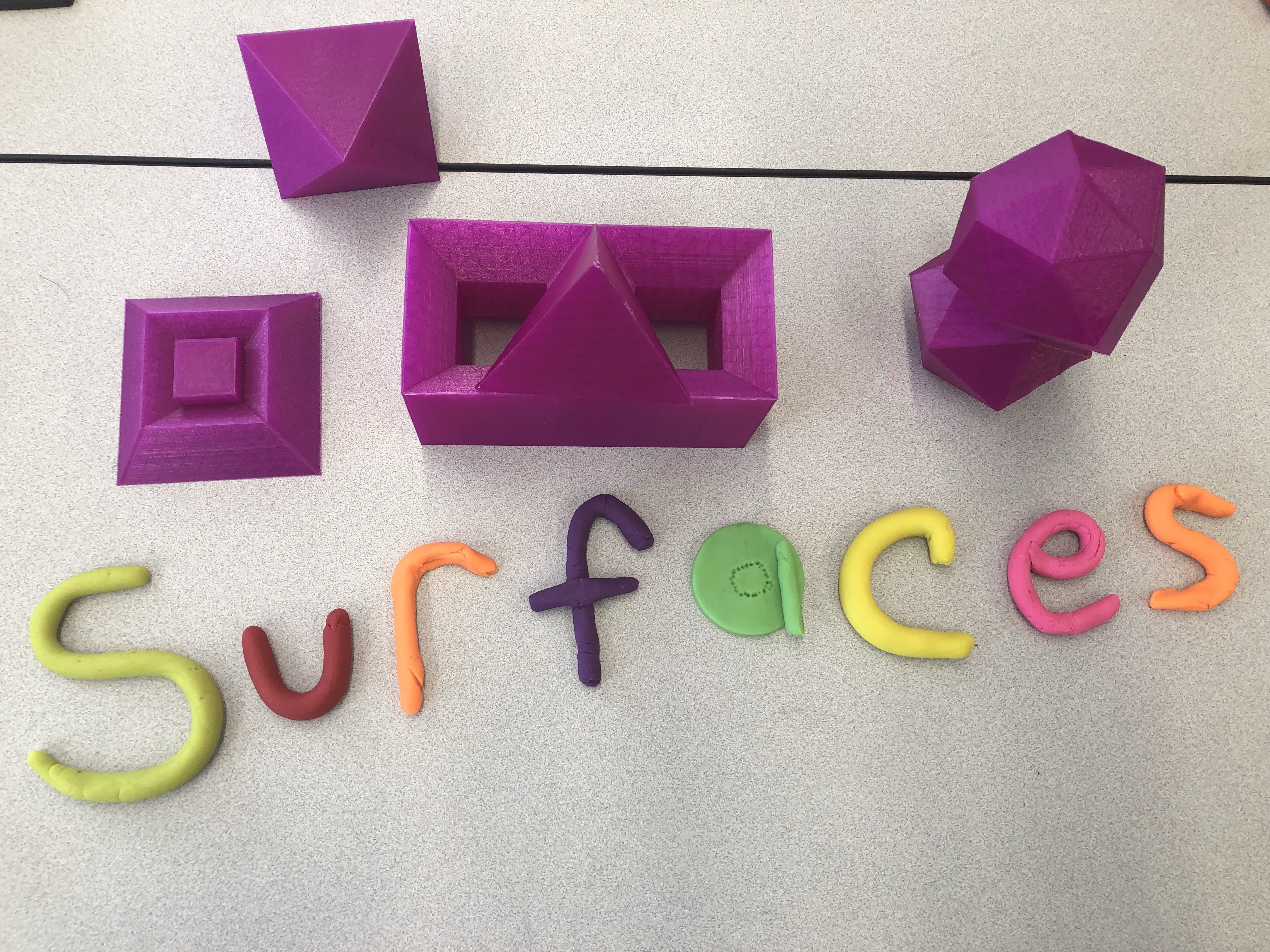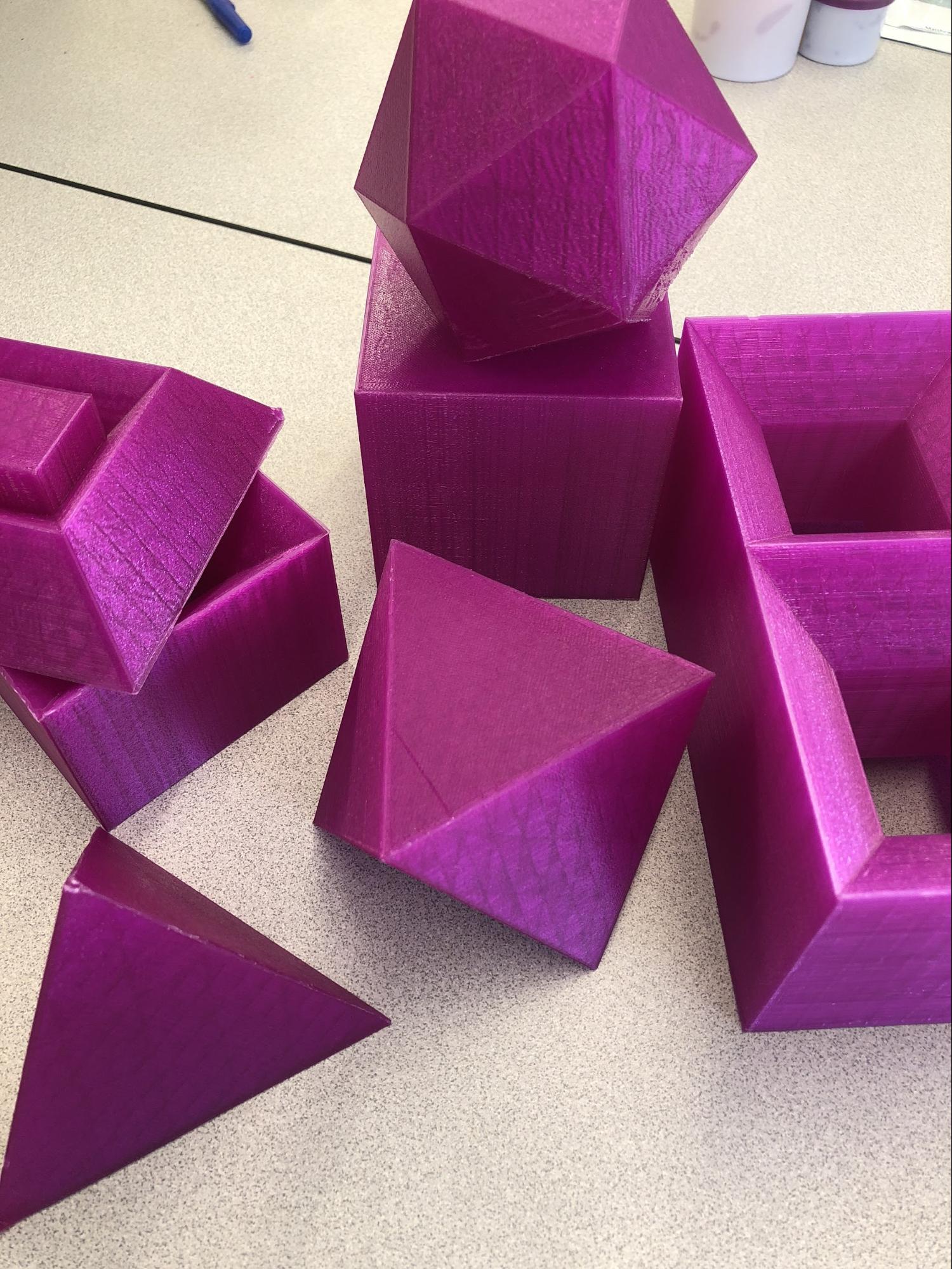Classification of Surfaces

Naomi Gedion, Kiah Matthews, Kaila-Elle Miles, and Madison Norman
In section one, we learned what the actual definition of a surface is, how to tell how many dimensions an object has, and how to make shapes from other shapes. A surface is technically an object that has width and length. A surface is also something that looks two-dimensional to something living on it. Dimensions are the directions that you could go on an object, for example: North and South, East and West; and up and down. For us on Earth, the Earth is a two dimensional object because we can only go North, South, East, and West. For a bird, the Earth is a three-dimensional object because the bird can go North, South, East, West, up, and down. We learned that any shape can be molded to another shape. The mobius band, torus, and klein bottle are all made from squares. The squares have arrows and double arrows which show what direction it should be folded into. In surface classification, any shape can be made into another shape.

In section two, we found the characteristics (vertices, edges, and faces) of different polyhedron shapes such as the shapes above and also spheres. Then use the Euler formula "V-E+F=2". Depending on the amount of holes there are to the figure, use math instead of counting each of the shapes characteristics if your stumped. For example,if you can get the V and F but can't find E, you could use the formula for an easier way to determine what your missing. We also had to theorize simple shapes to determine if they were homemophorbic or not, which means, we had to think about if the shape we had could be used to recreate another shape without breaking, cutting, or doing anything to the shape that would change it from its original form.
In section three, we learned about advanced properties of surfaces. The important surfaces that we defined were boundary-less, closed, and compact surfaces. A point in the surface where you can draw a small ball around the point that is completely contained in the surface and doesn't contain any points not on the surface is called an interior point. Exterior points are almost the exact opposite of interior points. Exterior points exist outside of the surface.
In section four, we learned about advanced cutting and pasting which helped us to learn that you can construct a model of any surface using a polygonal region. We also learned how to "word" a shape using its orientation which is when you choose a direction to traverse the perimeter of a shape as similar to what we learned in section one. When learning the word for a shape, you need to remember to use at least two letters and arrows around the second shape to show direction. When learning this, you can start with a word and make the shape to match it or start with the shape and make the word from it. Finally, we learned a little trick to write the word for the torus which is the donut-like shape. For a one holed torus, you start out with two letters. You first write them by themselves then invert it like so "a^-1b^-1". The final word would look like this: "aba^-1b^-1". Basically, for every hole you add, you would just need another group of two letters; you write them as they are, then those same letters inverted.